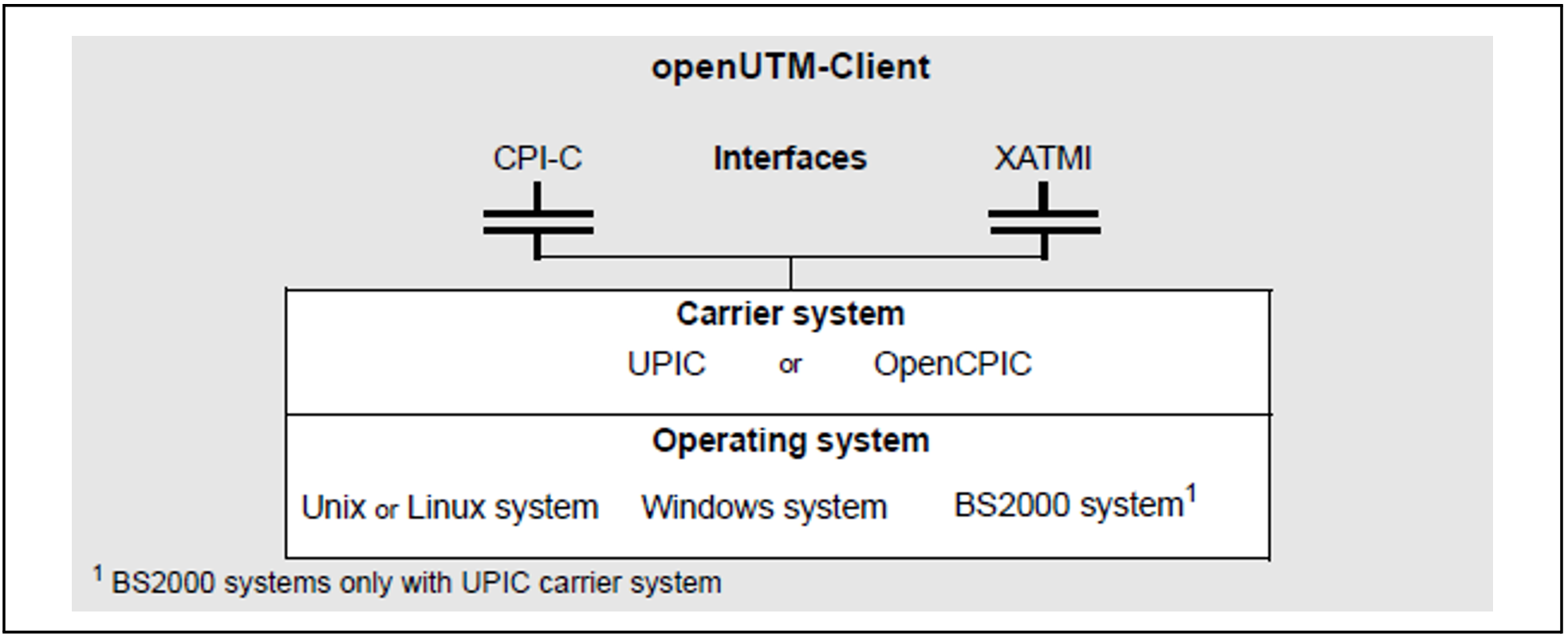To call services, openUTM-Client offers standardized X/Open interfaces on various platforms and carrier systems.
Figure 1: Standardized X/Open interfaces
Interfaces
openUTM-Client can be programmed with the X/Open interfaces CPI-C and XATMI.
Carrier systems
The CPI-C and XATMI interfaces are provided by both the UPIC carrier system and the OpenCPIC carrier system. The task of the carrier system is to establish the connection to the other necessary components, such as the transport access system (TCP/IP in Unix, Linux and Windows systems or BS2000 systems, PCMX in Unix, Linux and Windows systems or BCAM in BS2000 systems).
The UPIC carrier system offers the following advantages over OpenCPIC:
The client program can simulate the activation of function keys.
Format IDs can also be exchanged between client and server as structure information together with the data.
The client program can assign a new password.
Operating system platforms
A carrier system can reside on the following different kinds of different platform:
Windows systems
Unix and Linux systems
BS2000 systems (UPIC carrier system only)
Because the CPI-C and XATMI interfaces are standardized, i.e. identical on all platforms, the client applications created and tested on one platform can be ported to any of the other platforms.
Definition of terms
A program containing CPI-C calls is referred to below as a CPI-C program and a program containing XATMI calls is referred to as an XATMI program. The underlying carrier system is only mentioned if it influences the functionality or is visible on the interface.
A CPI-C application or an XATMI application is the totality of the CPI-C or XATMI programs plus all configuration files required for the respective carrier system.

